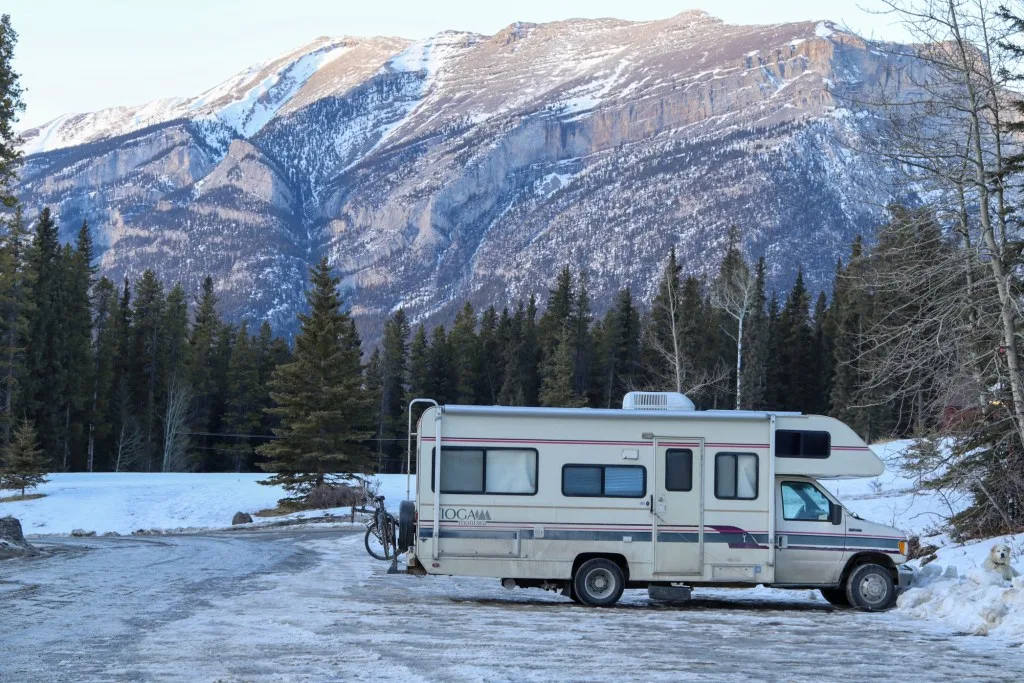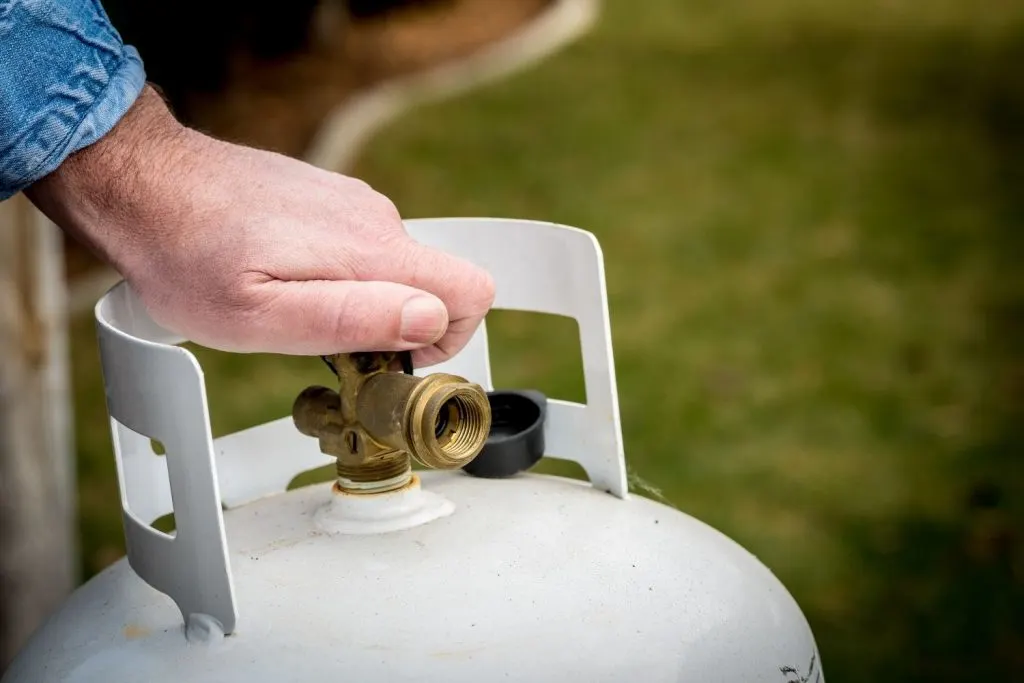You’ll want to prepare your RV if cold weather is in the forecast. If not, you’ll likely be in for a miserable time. RVs aren’t known for having a generous amount of insulation, so they’ll need your help if you want to stay warm.
Luckily, we’ve learned a thing or two from spending time in our RV during cold weather. Here are a few tips for preparing your RV. Let’s get started!
How Cold Is Too Cold for an RV?
Some RVs are better than others at withstanding cold weather. If your RV has a four-season rating, you can typically stay in it when temperatures are in the teens and single digits for short periods. Will it be overly comfortable?
Likely not. Will you blow through a tremendous amount of propane? Absolutely! However, the rig itself can withstand the temperatures, and you may only experience a frozen water line or two.
Those camping in an RV that doesn’t have a four-season rating will likely want to throw in the towel once the temperatures reach the lower 20s. Because they don’t have the same heating systems and insulation as a four-season rated RV, they won’t be able to handle the extreme cold.

Will RV Holding Tanks Freeze?
RV holding tanks can freeze if exposed to freezing temperatures for extended periods. The more liquids you have in your holding tanks, the longer it will take for them to freeze.
However, some RVs with a four-season rating have tank heaters to protect the holding tanks from freezing. These rigs will also blow warm air into the underbelly near the tanks to help fight the cold air.
How to Prep Your RV for Cold Weather
You can do several things to prepare your RV for cold weather. You’ll need a well-rounded plan to stand the best chance of staying comfortable during the cold weather. Several of these tips will help you be as prepared as possible for the weather.
Reduce Heat Loss
You don’t want to make your heater work harder than necessary to keep you and your RV warm. Look for any areas where you’re losing heat. One of the most common places RVs lose heat is through the windows and the roof-mounted vents.
It’s a good idea to purchase a vent insulator to help avoid the warm air from escaping.
Another major source of heat loss is repeatedly opening and closing the door to your RV. Every time you open the door, you invite a tremendous amount of cold air into your rig. It can take quite some time for your RV’s furnace and heater to replace the cold air you let in. Minimize opening and closing your RV’s door if you want it to stay warm inside your rig.
Stock Up on Propane
Propane is the most efficient heating source to keep you and your RV nice and toasty. However, the colder the temperatures get, the more your propane furnace runs. Make sure you have plenty of propane on hand and that you can know where you can get more when you run low.
Some RVers will even rent larger tanks from a propane company to avoid constantly worrying about how much propane they have. However, it’s a good idea to make sure you check your levels if the forecast is calling for cold temperatures. You’ll want to give yourself plenty of time to fill up your propane tanks ahead of time.

Add Extra Wall or Window Insulation
Some RV manufacturers do a better job and use better materials when constructing their rigs. If there are any areas where you’re feeling drafts, you’ll want to consider beefing up the wall or window insulation. We’ve heard of RVers having to put in pieces of insulation behind drawers and cabinets due to the lack of insulation.
While those massive RV windows can be a nice way to see the landscapes surrounding your RV, they often let in a tremendous amount of cold air. It’s a good idea to take the time to get some foam window insulation and cut it to size for your windows.
This can help prevent the cold air from passing through your windows and into your RV.
Put Heaters on Holding Tanks
Putting heaters on your holding tanks is a great option, especially if your RV didn’t come with them. These heating pads wrap around your holding tanks and connect to your RV’s 12-volt electrical system.
Some will have temperature sensors that will kick in once the outside temperature reaches a specific temperature and kick off when the temperature rises above the threshold. If you’re worried about your holding tanks freezing, invest in tank heaters!
How Do I Make My RV Warmer?
The most obvious answer to this question is to drive south. However, if you’re asking this question, it’s probably not an option. If you’re parking your RV somewhere to be stationary for the winter, installing an RV skirting can be tremendously helpful.
The skirting acts as a wind block and helps prevent the cold air from getting under your rig. There are several options worth considering, including budget-friendly DIY options. All are effective ways to block the wind and get the job done.
Using your propane furnace will be tremendously helpful in keeping your RV warm. These systems typically have vents throughout the rig and help distribute the heat. Close any doors or areas of your rig that you will not use. This will help keep the main living spaces warm and avoid wasting heat in areas where you won’t be.
Is Camping in Cold Weather Worth It?
Camping in cold weather can be a great way to experience popular areas without crowds. However, if you’re not prepared, it can be a miserable and uncomfortable experience for you, your RV, and anyone camping with you.
Do yourself and your RV a favor and make sure you take the appropriate time to prepare your RV for cold weather. You’ll have a much smoother and more enjoyable experience if you do.
Discover the Best Free Camping Across the USA
To be honest with you, we hate paying for camping. There are so many free campsites in America (with complete privacy).
You should give it a try!
As a matter of fact, these free campsites are yours. Every time you pay federal taxes, you’re contributing to these lands.
Become a FREE CAMPING INSIDER and join the 100,000 campers who love to score the best site!
We’ll send you the 50 Best Free Campsites in the USA (one per state). Access the list by submitting your email below: